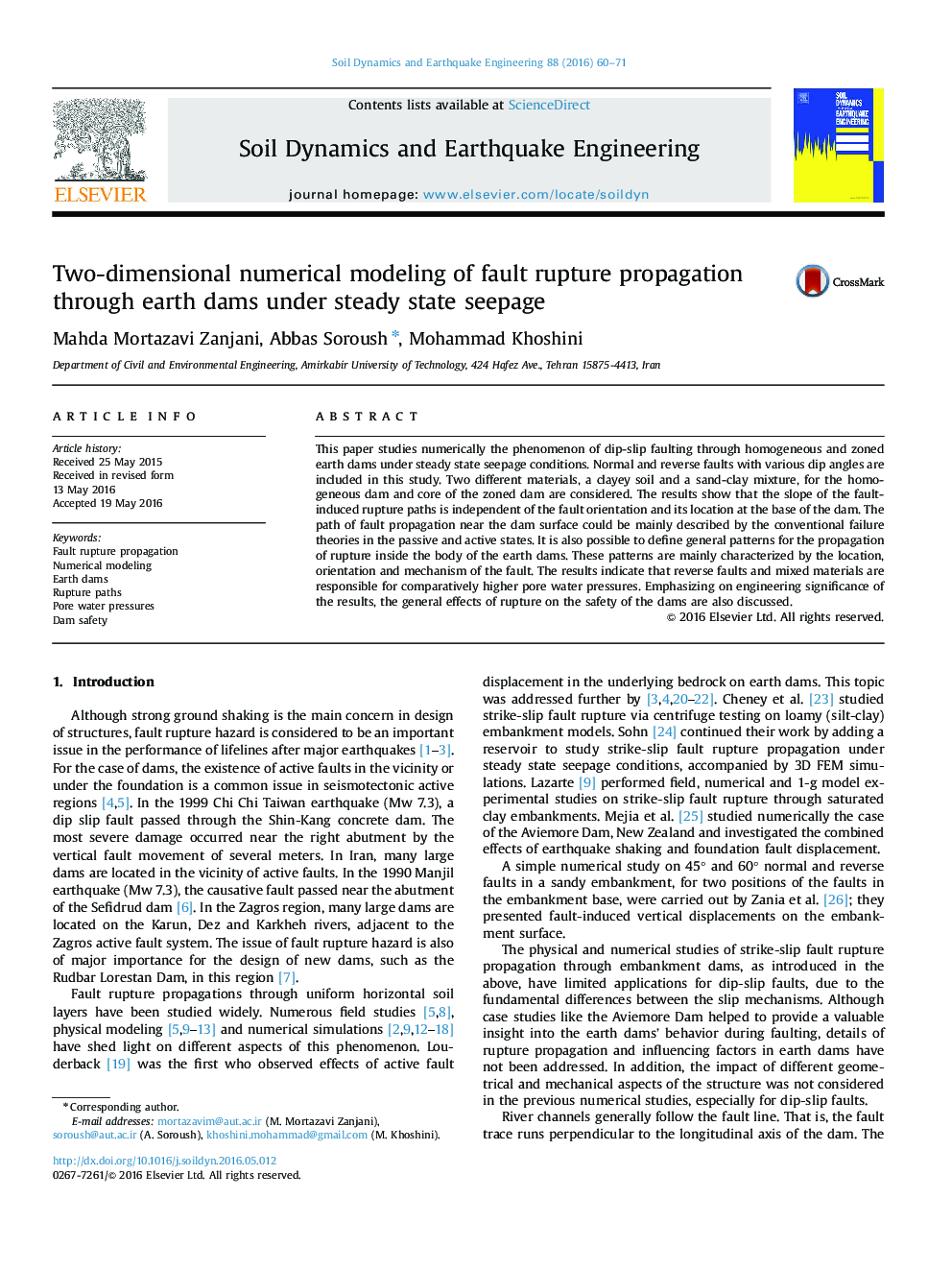| Article ID | Journal | Published Year | Pages | File Type |
|---|---|---|---|---|
| 303837 | Soil Dynamics and Earthquake Engineering | 2016 | 12 Pages |
•Fault rupture propagation through homogeneous and zoned earth dams under steady state seepage is modeled numerically.•The angle of rupture paths near the soil surface corresponds to failure theories in passive and active states.•Reverse faults induce higher pore water pressures compared to normal faults.•The mixed clayey materials compared with the clayey soils exhibit comparatively higher fault-induced pore water pressures.•Some rupture paths increase the possibility of water leakage through the dam and pose a serious threat to the dam safety.
This paper studies numerically the phenomenon of dip-slip faulting through homogeneous and zoned earth dams under steady state seepage conditions. Normal and reverse faults with various dip angles are included in this study. Two different materials, a clayey soil and a sand-clay mixture, for the homogeneous dam and core of the zoned dam are considered. The results show that the slope of the fault-induced rupture paths is independent of the fault orientation and its location at the base of the dam. The path of fault propagation near the dam surface could be mainly described by the conventional failure theories in the passive and active states. It is also possible to define general patterns for the propagation of rupture inside the body of the earth dams. These patterns are mainly characterized by the location, orientation and mechanism of the fault. The results indicate that reverse faults and mixed materials are responsible for comparatively higher pore water pressures. Emphasizing on engineering significance of the results, the general effects of rupture on the safety of the dams are also discussed.
